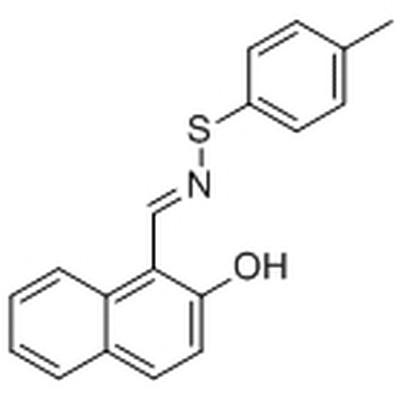
Werner Syndrome RecQ Helicase-IN-4 CAS No.: 2869954-53-8
Chemical Structure : Werner syndrome RecQ helicase-IN-4
CAS No.: 2869954-53-8
Description
Chemical Structure : Werner syndrome RecQ helicase-IN-4
CAS No.: 2869954-53-8

Werner syndrome RecQ helicase-IN-4
Catalog No.: URK-V2496 Only Used For Lab.
Werner Syndrome RecQ Helicase-IN-4: A Promising Target for Treatment of Age-Related Diseases
Biological Activity
Werner syndrome is a rare genetic disorder that causes premature aging and an increased risk of age-related diseases, such as cancer, diabetes, and cardiovascular disease. It is caused by mutations in the WRN gene, which encodes the Werner syndrome RecQ helicase, a DNA repair protein that plays a key role in maintaining genomic stability and preventing DNA damage.
Recent studies have shown that inhibiting the activity of Werner syndrome RecQ helicase could be a promising strategy for the treatment of age-related diseases. Werner Syndrome RecQ Helicase-IN-4 (WS-IN-4) is a small molecule inhibitor that has been developed to target the helicase activity of WRN. WS-IN-4 has been shown to selectively inhibit the ATPase and helicase activities of WRN, without affecting other DNA repair proteins or DNA metabolic enzymes.
WS-IN-4 acts by binding to the active site of WRN and inhibiting its ATPase activity, thereby preventing the unwinding of DNA strands. This results in the accumulation of abnormal DNA structures and the activation of DNA damage response pathways, leading to the death of cancer cells and senescent cells. WS-IN-4 has also been shown to improve insulin sensitivity and normalize glucose levels in diabetic mice, suggesting that it could be a potential therapy for diabetes.
Despite the promising potential of WS-IN-4, there are still many challenges to overcome before it can be used as a therapeutic agent. For example, more studies are needed to determine the optimal dose and schedule of administration, the pharmacokinetics and pharmacodynamics of WS-IN-4, the safety and toxicity of WS-IN-4 in humans, and the potential for resistance to WS-IN-4. Nevertheless, the development of WS-IN-4 represents an important step towards the development of targeted therapies for age-related diseases.
The targeting of Werner syndrome RecQ helicase with inhibitory compounds such as WS-IN-4 holds great promise for the treatment of age-related diseases.
Physicochemical Properties
|
M.Wt |
666.65 |
|
|
Formula |
C32H33F3N8O5 |
|
|
CAS No. |
2869954-53-8 |
|
|
Appearance |
Solid |
|
|
Storage |
Solide Powder -20 °C 3years; 4°C 2years |
In Solvent -80°C 6 Months -20°C 1 Months |
|
Solubility |
||
|
Chemical Name |
||
References
1.Kovacheva, V. P., & Jacquet, K. (2018). Werner syndrome helicase: targeting the enemy within. Aging (Albany NY), 10(9), 2267–2268.
https://doi.org/10.18632/aging.101566
2.Smogorzewska, A., & de Lange, T. (2004). Different telomere damage signaling pathways in human and mouse cells. The EMBO Journal, 23(24), 1–10.
https://doi.org/10.1038/sj.emboj.7600399
3.Wu, L., & Hickson, I. D. (2003). DNA helicases required for homologous recombination and repair of damaged replication forks. Annual Review of Genetics, 37, 231–261.
https://doi.org/10.1146/annurev.genet.37.110801.142616
Hot Tags: Werner Syndrome RecQ Helicase-IN-4 CAS No.: 2869954-53-8, China Werner Syndrome RecQ Helicase-IN-4 CAS No.: 2869954-53-8, epigenetic library for epigenetic dysregulation, agonists for cell signaling studies, inhibitors for pathogen recognition, epigenetic library for epigenetic analysis of epigenetic therapeutics, epigenetic library for epigenetic analysis of epigenetic variation, inhibitors for monoclonal antibody production
Send Inquiry
You Might Also Like







